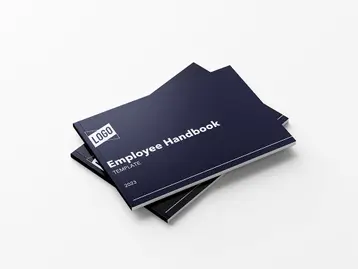
PTO (paid time off) donation policies are not new phenomena, and currently, 28% of U.S. companies allow their employees to donate their days off to those in need, according to the Motley Fool. Despite the general message throughout the pandemic to “stay home if you’re sick,” this is not always possible for workers earning lower wages and who don’t receive adequate paid time off. Given that the Fair Labor Standards Act does not mandate organizations to provide paid time off, staying home is just not an option for some Americans. With so many people suffering from COVID-19 and needing time to recover or take care of their families, the idea of implementing and leveraging a strong PTO donation policy can help people stay healthy.
What is a PTO donation policy?
A PTO donation policy allows employees to donate their unused vacation days to their colleagues who may be needing paid time off but find themselves without any available days. In some instances, organizations may allow employees to donate the dollar amount from PTO to a charity of their choice. Many employees don’t use their accrued time off, and a PTO donation policy allows them to put unused days to good use, instead of feeling guilty for wasting them. It also allows employees a chance to give back to their colleagues in a meaningful way. According to the Society for Human Resources, the employees who are eligible to receive the benefit of a PTO donation program are those who have either been affected by a medical emergency or those who have been affected by a natural disaster.
Getting started
Before creating your PTO donation policy, here are a few areas to consider:
Choose your model: SHRM recommends to first decide which of the 2 following models of PTO donation you’ll implement:
- Medical emergency relief: When your employees need additional PTO to care for their health or the health of a family member
- Natural disaster relief: Once the president declares an event a “natural disaster," impacted employees can use the time off from this policy
Create clear guidelines
You need to lay out clear guidelines around eligibility and policy before communicating them to the organization. For example, what is the limit, if any, on the number of days you can donate or receive? What qualifies an eligible donor or receiver? How do you account for salary differences when an employer donating a day has a higher salary than a person receiving a day? Make sure to account for these nuances.
Set standards around confidentiality
Some employers may choose to keep the program anonymous, meaning that the donors won’t know who the donations are going to. This may be useful in a situation where the receiver does not want to disclose information around their health status.
Decide on how to allocate days
Some companies choose to allow direct donations from one employee to another, while others prefer to use a “PTO bank.” With the PTO bank, employees may choose to donate their days into a pool, and then employees submit an application to receive a day from that bank.
Be aware of tax implications
Every state may have unique requirements when it comes to taxing these PTO days, and different scenarios may result in additional taxes for the donor and recipient. Consult your legal counsel to ensure you’re meeting your state’s regulations and compliant with the IRS.
Review and set the budget
Before making any promises to your employees, examine the financial impact of your budget when it comes to employees using their time off. If your employees don’t typically use all their time off, you must calculate your projections as though all days off will be used for the upcoming year.
Consider your overall PTO strategy
If you do implement a PTO strategy, encourage your employees to participate and show them that it's beneficial to them as both the donor and recipient to join. While this kind of policy can have many positive effects and help your employees deal with their illness, it should not be placed in lieu of offering paid time off. PTO donations may provide a “band-aid” solution, but it does not change the fact that many Americans don’t have access to the proper paid time off or paid personal leave. For many, taking unpaid time off is not something they can afford.
Whole Foods received some backlash when their CEO encouraged its employees to make use of the PTO donations program throughout the pandemic. While the program itself is sound, many felt the company was leaving it up to the employees to handle things themselves instead of providing them with more paid time off. With Whole Foods being a subsidiary of one of the wealthiest companies, this sparked outrage across the internet. Is your company considering a PTO donation program? Is your program already well established and popular with your employees? Wherever you are on your program journey, let us know how it’s going! What has worked? What could be better? We would love to hear more.
This communication is for informational purposes only; it is not legal, tax or accounting advice; and is not an offer to sell, buy or procure insurance.
This post may contain hyperlinks to websites operated by parties other than TriNet. Such hyperlinks are provided for reference only. TriNet does not control such web sites and is not responsible for their content. Inclusion of such hyperlinks on TriNet.com does not necessarily imply any endorsement of the material on such websites or association with their operators.






